
Bierwiaczonek, Bogusław. 2013. Metonymy in Language, Thought and Brain
Review of: Bierwiaczonek, Bogusław. 2013. Metonymy in Language, Thought and Brain. Sheffield: Equinox, pp. iv + 291. ISBN 9781908049346.
More...We kindly inform you that, as long as the subject affiliation of our 300.000+ articles is in progress, you might get unsufficient or no results on your third level or second level search. In this case, please broaden your search criteria.

Review of: Bierwiaczonek, Bogusław. 2013. Metonymy in Language, Thought and Brain. Sheffield: Equinox, pp. iv + 291. ISBN 9781908049346.
More...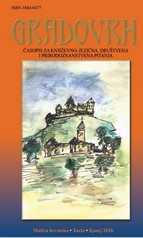
Dieser Beitrag besteht aus einem theoretischen Teil, in dem der bisherige Forschungsstand auf dem Gebiet der NPs (Nominalphrasen) und der Abfolge der NPs vorgestellt wird, der als Grundlage für eine korpusbasierte Analyse dienen wird. Dem Hauptziel widmen wir uns im zweiten Teil des Beitrags, der korpusgestützten empirischen Untersuchung. Das Ziel ist es, zu überprüfen, od die zahlreichen theoretischen Ansätze, die Abfolge der NPs betreffend, einer solchen empirischen Untersuchung standhalten. Es sei an dieser Stelle vermerkt, dass während der Analyse nicht auf den ganzen Satz Bezug genommen wird, sondern nur auf den Teil des Satzes, in dem zwei NPs aufeinander treffen können. Das beudeutet, es wird der Teil des Satzes zwischen der linken und der rechten Klammer analysiert (z.B. Franz hat seinem Bruder die Wahrheit gesagt.; [...] dass Franz seinem Bruder die Wahrheit gesagt hat.), wobei die NPs nicht unmittelbar aufeinander folgen müssen.
More...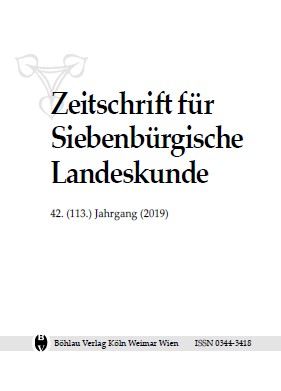
Das Deutsche ist eine plurizentrische Sprache wie Französisch und Englisch. Die nationalen Voll- und Halbzentren der deutschen Standardsprache in den drei heutigen Staaten Österreich, Schweiz und Deutschland sowie in Liechtenstein, Luxemburg, Ostbelgien und Südtirol haben mit ihren sprachlichen Besonderheiten erstmalig gemeinsam Eingang gefunden in das Variantenwörterbuch des Deutschen von 2004. In dessen zweite, völlig neu bearbeitete Auflage wurden neben den genannten Staaten und Regionen zusätzlich die sogenannten „Viertelzentren“ Rumänien, Namibia sowie die Mennonitensiedlungen mit ihren lexikalischen Spezifika aufgenommen. Zum ersten Mal bekommt damit die deutsche Hochsprache der deutschen Minderheit in Rumänien einen gebührenden Platz in einem Lexikon der deutschen Sprache neben den anderen Voll- und Halbzentren. Verantwortlich für die rumäniendeutschen Spezifika, die in die Neuauflage des Variantenwörterbuchs aufgenommen wurden, war der namhafte rumänische Lexikologe Ioan Lăzărescu. Aufgrund von Platzmangel entschied er sich für lediglich rund 80 Rumänismen. Bereits 2008 brachte Lăzărescu gemeinsam mit dem Regensburger Linguisten Hermann Scheuringer ein weiteres Nachschlagewerk heraus, in dem die historisch bedingten Gemeinsamkeiten mit dem Österreichischen aufgeführt und ins Rumänische übersetzt sind.
More...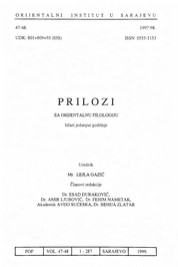
In the article entitled "Onu suz ettirmek ićin bir zanaat vereim" - Some Observations on the Lexis of the Texts in the Turkish Language Written in Latin Script, the author observes the lexis of the so-called Bosnian Turkish language, i.e. of the idiom used in the Ottoman period (i) in the territory of the present-day Bosnia and Herzegovina. The lexis of the idiom has been analyzed on the basis of the texts written in Latin script (dictionaries and grammar books) in Turkish from the 19th century, whose authors were the Franciscan priests of Bosnia and Herzegovina. In these texts the following lexical features have been noted: 1) frequent shift of semantic field of general- Ottoman words [e.g. the word (h)ayvan is used to mean "horse"]; 2) "terming" the Turkish appellatives [e.g. the word nur meaning "God's order"]; 3) overuse of foreign words [religious terms from Armenian and Greek]; 4) the use of words of Slavic origin, dialect words, regional words, ete., i.e. of the words whose etymology is difficult to determine. One of them is the "Bosnian" verb suz ~ süz ol- "keep silent", suz ettir- "shut somebody up", which is not recorded in dictionaries of the Ottoman/Turkish language, i.e. in glossaries of modern west-Rumelian dialects available to me.
More...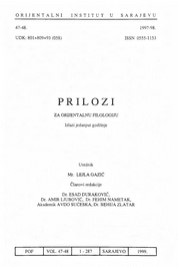
The paper deals partly with a contrastive analysis of suffixes of Oriental origins in the Bosnian language, among which in terms of number, productivity and fertility, as well as in terms of their strikingness (which in a way marks the Bosnian language vis-a-vis other varieties of the South Slavonic languages) štand out suffixes of Turkish origin. In contrast to the Arabic language, which did not leave any remarkable traces in our formation system, Persian suffixes are not infrequent, but compared to Turkish formation morphemes, they are less productive and less fertile; therefore, they have been paid less attention in the paper. Naturally, not ali suffixes of Turkish origin have the same status in our language, so that the most frequent ones {-luk, -čijaf-džija, -li, and -lija) have been given the most space, which štand out indeed by their productivity, fertility and integration into our formation system, therefore by their usage frequency/ topicality, too. Besides these, dealt with have also been less productive Oriental suffixes which are, nevertheless, recognizable and fertile whether they are of Turkish {-džik, -suz, -ile) or of Persian origins {-ana/-hana, -dar/-tar, -ćar/-ćer), while other suffixes of Oriental origins - which were taken over into our language, but did not separate from their stems they had been imported with, therefore they did not become independent, and thus did not become topical as formation morphemes (we do not even recognize or record them as such) - have not been specifically analyzed (Tur. -ki/-gi, Ar. -i, etc.).
More...
On the basis of different examples of set collocations known of in the Bosnian and Turkish languages, this paper tries to bring some observations on the transfer of the meaning of Turkish set collocations into the Bosnian language. Introđuction, in addition to definitions of idioms and other set collocations, deals with the issues encountered when transferring them from one linguistic system into the other. Although definitions of such idioms point out the fact that they are untranslatable into other languages, given here are numerous examples of Turkish set collocations taken over by the Bosnian language and adapted phonetically and phonologically, adapted partially or in kalk. Phonetically-phonologically adapted Turkish collocations in the Bosnian language are marked as a characteristic of a speech community. The example of the expression bašum sagosum points to its use in this form, and to develop new meanings in its kalk in the Bosnian language. The author gives some notes , too, about possible translations of some Turkish set collocations from everyday communication, drawing attention to different possibilities of interpretation o f the same collocation, depending on the speech situation. Also, some curses and blessings in the Turkish language can be called idioms. Some of them, if literally translated, lose their meaning, while in the description of the meaning they lose their metaphoricalness. There are also examples that show possibilities of kalking these idioms, as well as transferring their meanings by stylistically and semantically close forms in the Bosnian language. Here have been recorded examples of Bosnian idioms with Turkish lexical corpus constituents, motivated by social relations, general experience or belief. On the basis of a large number of examples of synonymous Bosnian and Turkish idioms expressed with the same lexical and grammatical means within the two language systems, the author advances a hypothesis that those kalks are products of languages in contact, and parallel in the Turkish and the Bosnian languages he examines possibilities of varying those idioms within their firm structure. With regard to this, he defines some similarities. He also points out the metaphoricalness of the idioms as their feature.
More...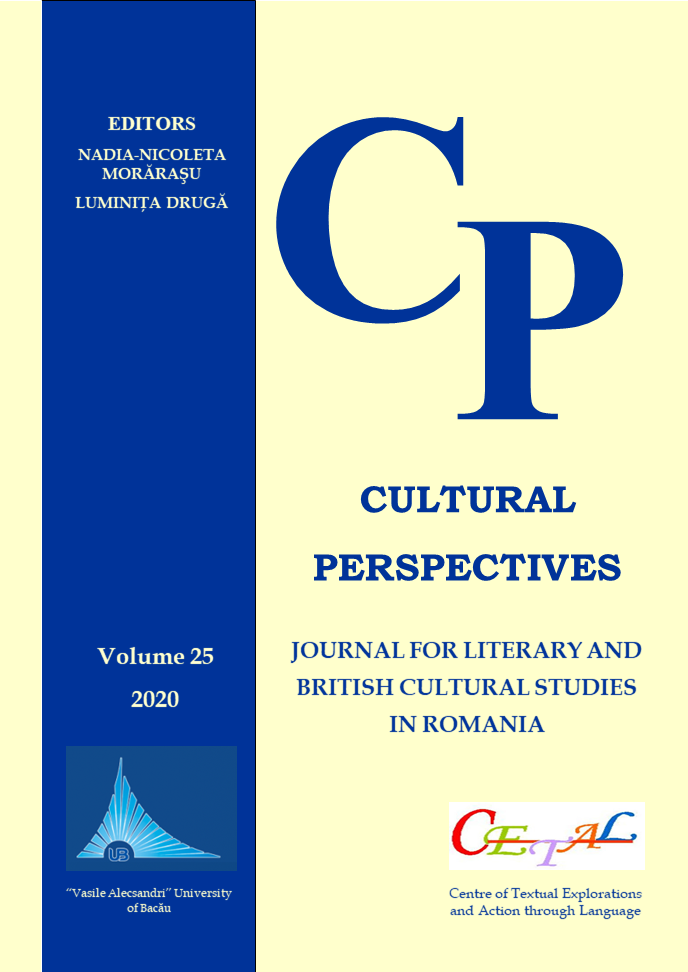
Urbanization gradually generated new needs and resources which, in their turn, led to a significant increase in technological innovation. As a consequence, digital transformations marked a radical change in the way people rethink and reorganize today’s society. Such transformations have not only shaped our lives but also influenced our cognitive status. We intuitively conceive and develop new concepts on the basis of metaphor. As a means of cognition, metaphors help us conceptualize things. The visual representations of what we perceive play a very important role in the way we conceptualize one mental domain in terms of another. By linking language to thinking and visual images, cognitive metaphor theory opens up the possibility for metaphor to serve as a vital methodological tool in investigating metaphoric representations.
More...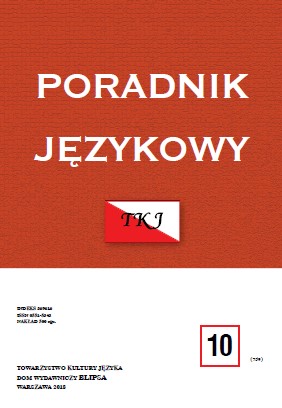
This paper presents the results of stylistic and semantic research on Middle Polish vocabulary represented by 300 nominal names excerpted from selected works by Wacław Potocki (1621–1696). The insufficient number of studies dedicated to stylistics of the 17th-century lexis encouraged the author to carry out the analyses. Based on the works by A. Markowski and D. Buttler, which describe methods of identifying common inflection vocabulary of the contemporary Polish, the author makes an attempt to apply similar examinations to old lexis. By means of vocabulary research and her own analyses, she separates, among others, sets of expressive, specialist and erudite vocabulary from the collected material, which in turn permits her to distinguish a group of neutral, stylistically unmarked, lexis from among 300 nouns. The employment of the structuralist method of semantic fields for Middle Polish common words enables the development of a thematic grid representing the distribution of the studied units in individual classes of real meanings. A comparative analysis of the semantic layer of the common vocabulary in two distant historical phases confirms a high stability and universal anthropocentrism of this part of the lexical resource of Polish.
More...
This paper presents a fragment of research on the history of the Polish geographical vocabulary. In the 18th century, geography became a separate discipline of modern knowledge and, in consequence, also an independent school subject. Handbooks are valuable sources in analysing discipline-related lexis, in particular in the period when this word resource was formed in the Polish language. This paper discusses various methods of introducing and explaining geographical vocabulary that are applied in handbooks, and the characteristics of the lexis of those days, such as vague distinctions of semantic scopes of lexemes, lack of stabilisation of the resource. The examinations of the material enable the observation of the evolving crystallisation process of the Polish geographical vocabulary. Handbooks have undoubtedly played a significant role in popularising geographical lexis.
More...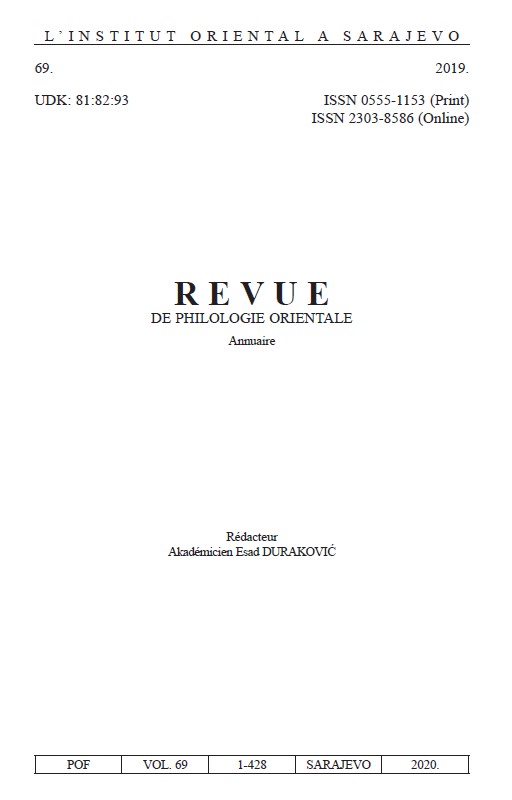
The primary objective of this paper is to analyze adverbial groups in Kutadgu Bilig written in Karakhanid Turkish. The semantic structures of the adverbial groups in the poem Kutadgu Bilig are compared to the semantically close adverbial groups in modern Turkish language. An analysis like this represents a very significant contribution to the study of Turkish language from a diachronical perspective. Besides, the paper compares the semantic structures of the converbial and quasi-converbial groups in the poem Kutadgu Bilig with the translation equivalents in Bosnian language, of thus contributing to better comprehension and understanding of the grammatical and semantic structures of Turkish and Bosnian language, which are genetically and typologically different languages. The original language in the paper is Turkish, which implies the fact that the semantic structures of Turkish converbial and quasi-converbial groups are compared to the semantically close adverbial clauses in Bosnian language.
More...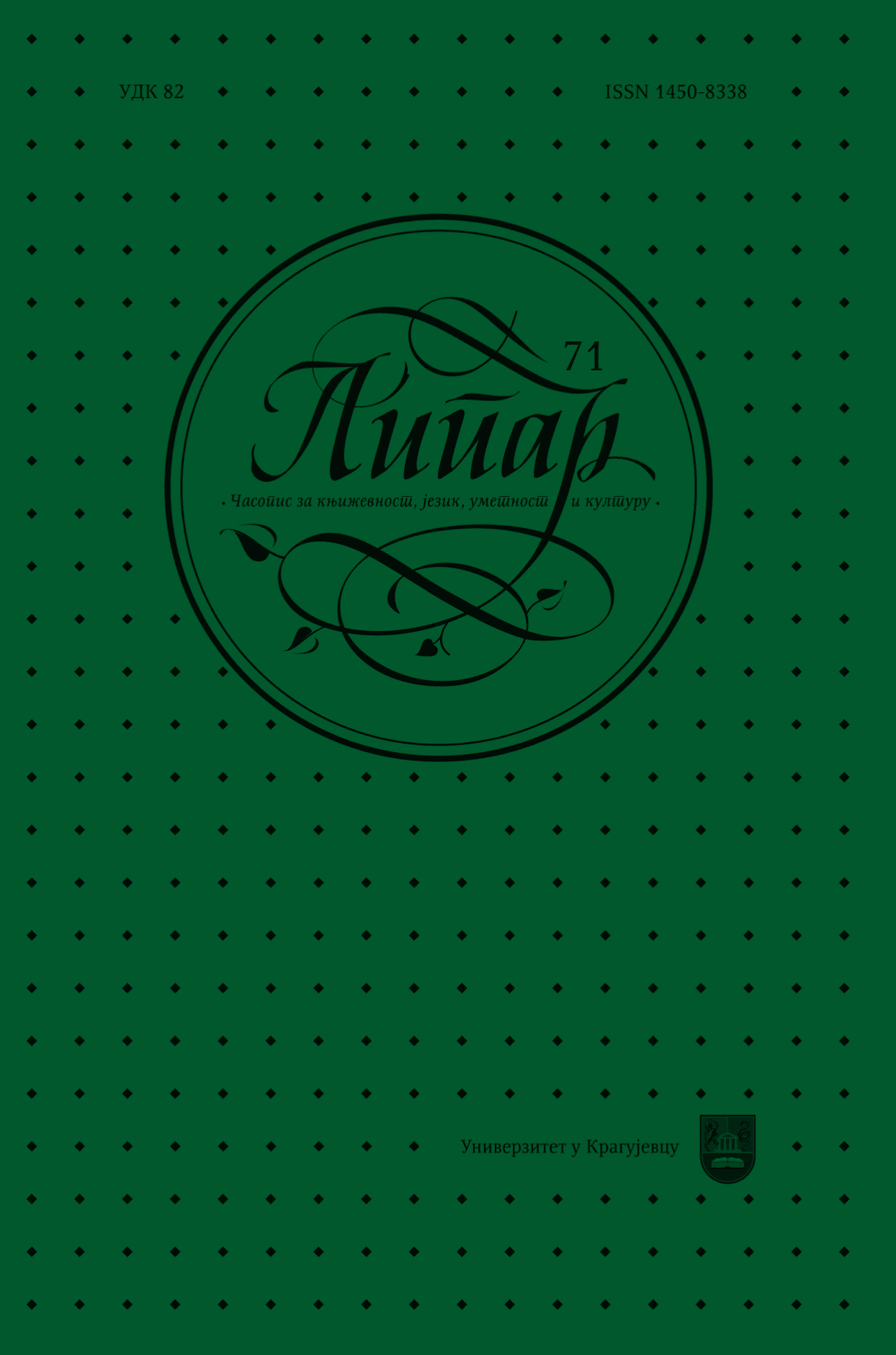
This paper examines phraseological expressions in Serbian and English language that contain the lexeme door (vrata). The method that was used to analyse the phraseological expressions in both languages is semantic analysis and the expressions were classified in certain cathegories according to their meaning. By comparing the phraseological units found in Serbian dictionaries to those found in English dictionaries, we can conclude that, in certain cases, there is a high degree of corespondence between the given languages. However, the analysis showed that, in certain instances, we can also denote a difference in either form or meaning, or both.
More...
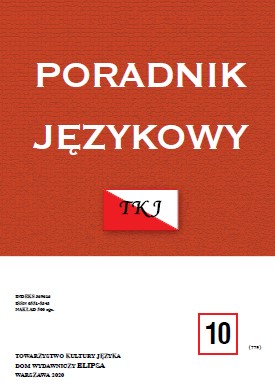
The aim of this paper is to present a fragment of Wykład nabożny piosnki „Salve Regina” (A pious interpretation of the song “Salve Regina”), a ca. mid-16th-century manuscript by Jerzy Argiglobyn, in the context of the Reformation by means of a lexical and semantic analysis of the sequative names (Lat. nomina sequativa) and proper names occurring there. The selection of the fragment was determined by the fact that, on the one hand, it is the essence of the discussed manuscript as a polemic work, which arises from the accumulation of references to the Reformation, and on the other hand, this fragment is the most problematic one when it comes to a lexical and semantic analysis. The author of the manuscript, when referring to the Reformation, enumerates the names of the theologians associated with it and mentions the places important to the new faith and the followers of the proliferating Reformation denominations. He provides each piece of such information in a manner presenting it in a negative, at times even insulting, light.
More...
The insufficient number of studies dedicated to the phraseology of works by Wacław Potocki (1621–1696) encouraged the author to examine this area of the Sarmatian writer’s oeuvre. This paper presents the outcome of a lexical and semantic analysis of 40 idioms excerpted from three representative works by the poet: Ogród nie plewiony (Unweeded Garden), Moralia (Morals), and Transakcja wojny chocimskiej (Transaction of the Hotin War). Based on the adopted material sample, an attempt was made to identify the characteristics of Sarmatism, a cultural formation of the Commonwealth the main representative of which was W. Potocki. To this end, the collected expressions and phrases were classified by three thematic fields that were significant for the sociolect of the nobility (<everyday life>, <religion>, <war>). An important complementation of the analysis of the Baroque phraseology is tracking it until modern times. The conducted comparative research of the lexical resources of the Polish language in its two distant periods showed that, despite the over three hundred years between the examined materials, the sarmatisation of language has still been a significant component of the Polish culture.
More...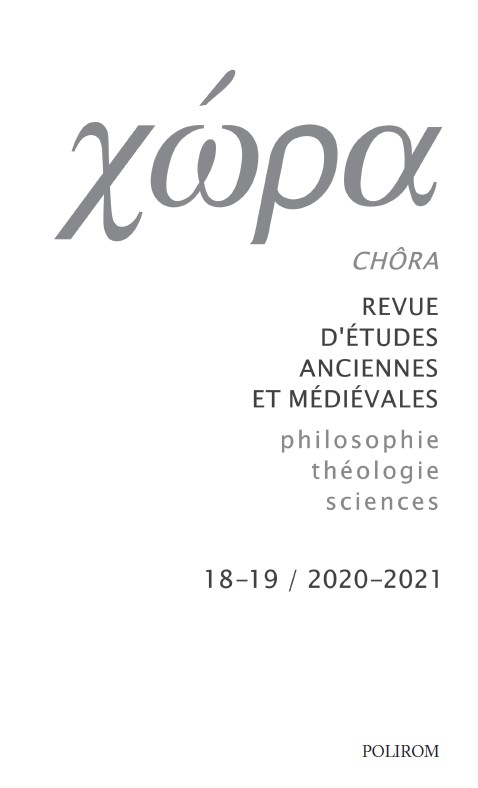
Expressing ‘essence’ in the translation and commentary of Timaeus by Calcidius (4th c. p.D.) depends on Platonist terminology which is not completely stabilised. We will see how, in his translation, Calcidius translated Greek words as οὐσία or φύσις, but also how he used the word substantia whereas there was no expression of essence in the Greek text. The Latin commentator used both essentia and substantia, but the latter quite often. However, in doing so, he weakened the meaning of the word substantia. Lastly, Calcidius translated into Latin and used Greek no‑Platonist expressions with a very specific signification of ‘essence’.
More...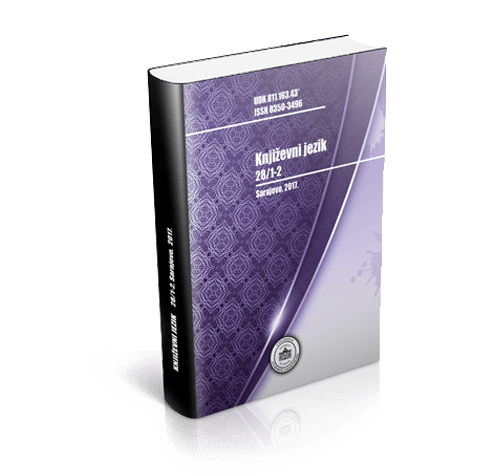
Review of: MIRELA OMEROVIĆ - Ismail Palić, Gramatika, semantika i pragmatika rečenice, Institut za jezik, Sarajevo, 2019
More...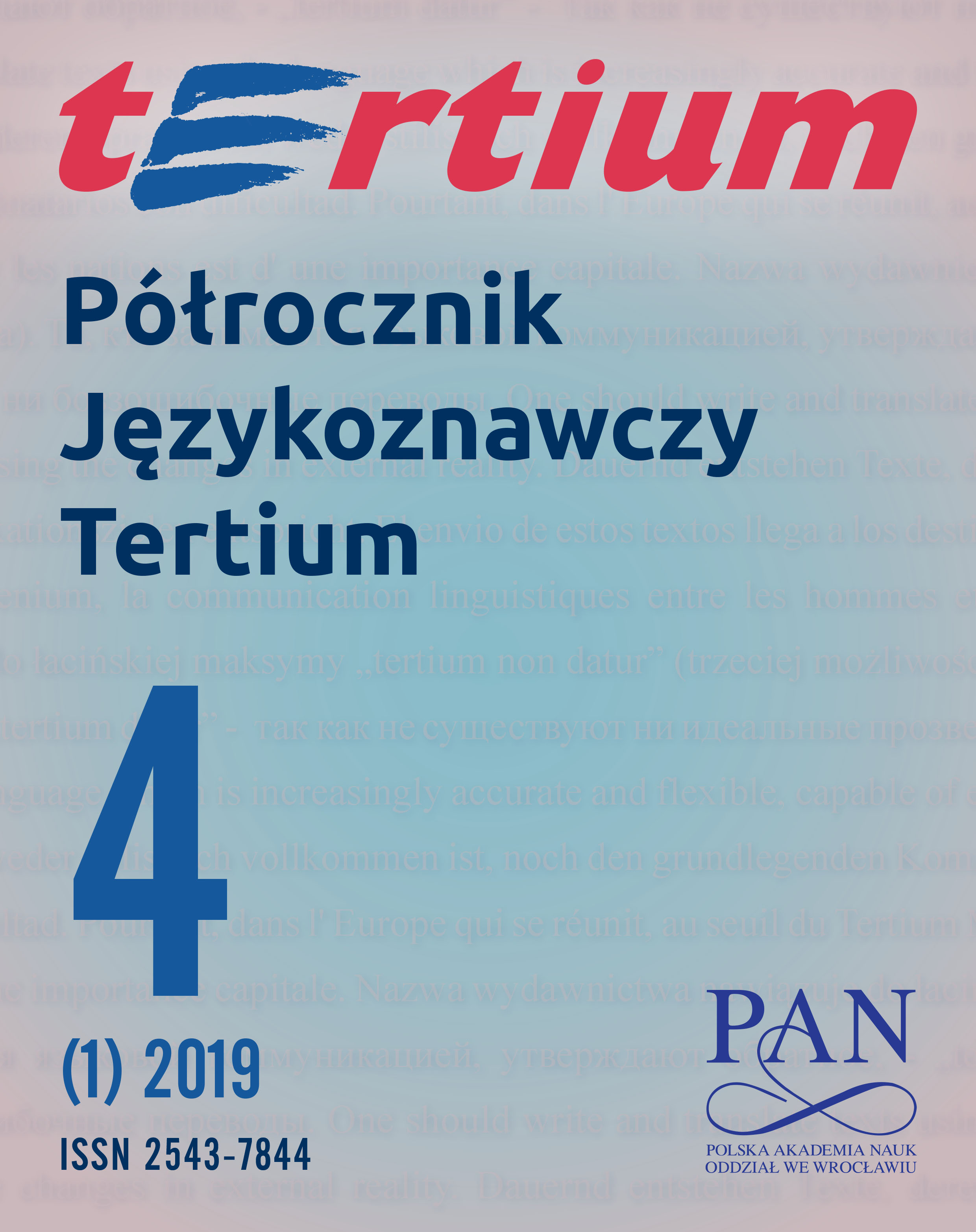
The article is a part of a more extensive linguistic project exploring the concept of ‘empathy’ and its exponents in the present-day Polish (Falkowska 2012, 2017, 2018). The analysis is based on a corpus compiled out of Polish media texts concerning the tragic Nanga Parbat expedition (January 2018). Selected Internet posts and social media comments have also been included. I focus on empathy understood along the lines set by Kuno (1987), i.e. the speaker’s identification with one of the scene’s participants, and I aim at depicting the linguistic means that are applied in order to communicate the speaker’s empathy towards a scene participant. The study employs Langacker’s Cognitive Grammar model (1987, 2009) and the cognitive discourse analysis framework (Hart 2014), with special reference to the notions of empathy, empathy hierarchy and point of view.
More...
Review of: Sofija Gadžijeva - Patimat Abdulaevna Saidova (2019) Slovar’ andalal’skogo dialekta avarskogo jazyka. IJaLI DFIC RAN, ALEF, Mahačkala. Саидова П. А. (2019). Словарь андалальского диалекта аварского языка. Под редакцией М. Ш. Халилова. Махачкала: Институт языка, литературы и искусства им. Г. Цадасы Дагестанского федерального исследовательского центра Российской академии наук; АЛЕФ.
More...
Review of: Martina Grčević - Prva slovačka kontrastivna sintaksa (u usporedbi s hrvatskom). Dubravka Sesar, Pregled slovačke sintakse, Filozofski fakultet Sveučilišta u Zagrebu, FF press, 2018., 158 str.
More...
Review of: Marina Grubišić - Ida Raffaelli, Daniela Katunar, Barbara Kerovec (eds.) (2019), Lexicalization patterns in color naming. A cross–linguistic perspective. John Benjamins Publishing Company, Amsterdam/Philadelphia. 429 pages.
More...